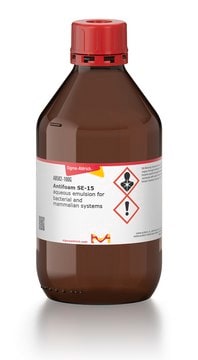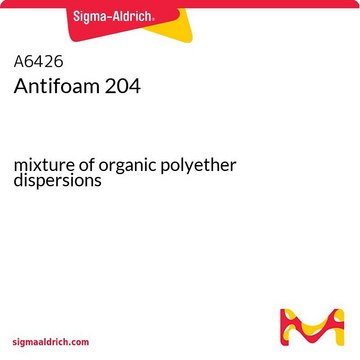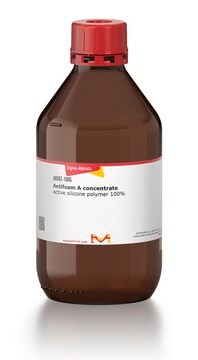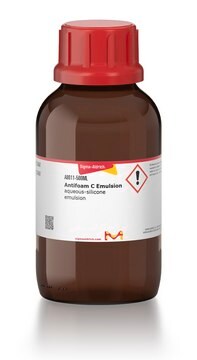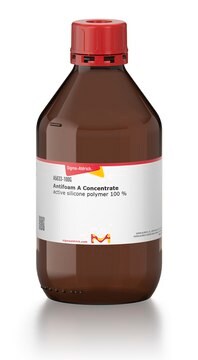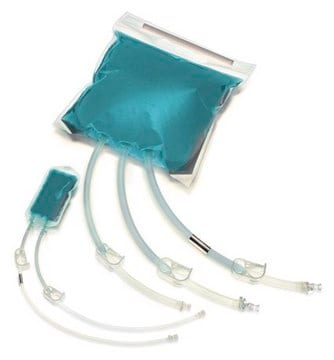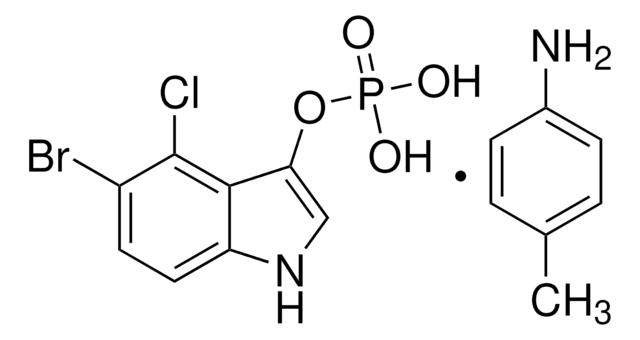Recommended Products
form
emulsion (aqueous)
Quality Level
concentration
100% (organic)
technique(s)
cell culture | hybridoma: suitable
microbiological culture: suitable
density
0.98 g/mL at 25 °C
storage temp.
room temp
suitability
bacteria (fermentation)
Other Notes
A long-lasting fatty acid ester antifoam, 100% active.
Caution
Can be autoclaved repeatedly.
Storage Class Code
10 - Combustible liquids
WGK
WGK 3
Flash Point(F)
Not applicable
Flash Point(C)
Not applicable
Choose from one of the most recent versions:
Already Own This Product?
Find documentation for the products that you have recently purchased in the Document Library.
[The application of antifoam silicones in the microbiological fermentation technic].
L Zalay et al.
Zentralblatt fur Bakteriologie, Parasitenkunde, Infektionskrankheiten und Hygiene. 1. Abt. Medizinisch-hygienische Bakteriologie, Virusforschung und Parasitologie. Originale, 197(1), 118-126 (1965-07-01)
S Zhang et al.
Journal of biotechnology, 25(3), 289-306 (1992-09-01)
Foam formation and the subsequent cell damage/losses in the foam layer were found to be the major problems affecting cell growth and monoclonal antibody (MAb) production in stirred and sparged bioreactors for both serum-supplemented and serum-free media. Surfactants in the
L A van der Pol et al.
Biotechnology progress, 9(5), 504-509 (1993-09-01)
Addition of high concentrations of silicone antifoam (AF) to a suspension of hybridoma cells in a bubble column reduces the death rate when using medium without a protective component. In contrast, high AF concentrations can cause detrimental effects in a
J R Hermann et al.
Applied and environmental microbiology, 72(7), 4811-4818 (2006-07-06)
The objective of this research was to optimize sampling parameters for increased recovery and detection of airborne porcine reproductive and respiratory syndrome virus (PRRSV) and swine influenza virus (SIV). Collection media containing antifoams, activated carbons, protectants, and ethylene glycol were
Our team of scientists has experience in all areas of research including Life Science, Material Science, Chemical Synthesis, Chromatography, Analytical and many others.
Contact Technical Service